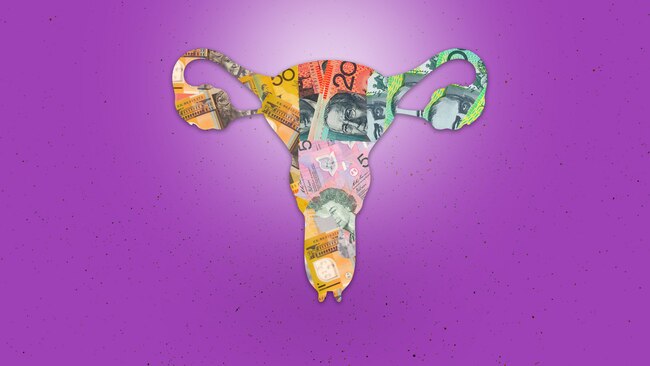Wait, abortions cost HOW MUCH!?
Although a far cry from the US' most draconian abortion laws, Australia still has a 'long way to go'

Although a far cry from the US' most draconian abortion laws, Australia still has a 'long way to go'
Australia's 'patchwork' approach to abortion access exacerbates inequality, with some people travelling interstate for a termination and paying anywhere from $38.80 to more than $8000.
Only 10% of Australian doctors, and only 1% of regional doctors, are registered to prescribe the most affordable abortion pill, RU486.
Every year, 88,000 Australians have a legal termination.
“It is time for state and territory governments to come to the table and mend Australia’s patchwork of abortion access," Bonney Corbin, Head of Policy at Marie Stopes International said. “We have a long way to go.
“We should remove gestational limits from legislation and consider how nurses, midwives and Aboriginal and Torres Strait Islander healthcare workers have a role to play in abortion access," Corbin said.
What are the two types of abortions?
- Medical abortion: involves taking a pill called RU486, sometimes referred to as the abortion pill or Mifepristone, to medically induce a miscarriage-type process. In Australia, it is prescription-only and licensed up to 9 weeks (63 days) gestation.
- Surgical abortion: is a day-surgery procedure that can occur at varying stages of gestation and is mainly performed in private clinics. After nine weeks it's the only option available to pregnant women in Australia. Surgical abortions are often also the hardest to access, due to the number of providers. These gestational limits vary state by state and territory by territory. This procedure can cost thousands of dollars.
It's common for a woman to learn she is pregnant by the time she is six weeks along, which means she only has three weeks (or less) to consider, find funds for, and seek a medical abortion.
"Women often don't have much time and in many cases, it's a 5 or 10 day timeline of how long you have to decide, book, and receive abortion care."
Is it an equal opportunity for all women?
While abortion is decriminalised across Australia, experts such as Corbin warn it's a bit of a "postcode lottery" with big differences between the abortion services available in urban areas and the regions.
Your first challenge might be finding a doctor who can prescribe the abortion pill. The training to prescribe this is optional, and only 10% of Australian doctors, and less than 1% of rural doctors, are registered.
Corbin said many women living in the regions have no choice but to travel hours - and in some cases across state lines - in order to terminate a pregnancy.
Equitable access to abortions in regional communities has not kept pace with the legislative change. Surgical abortions are mostly available only in urban areas, meaning regional patients face increased costs to cover travel, accommodation and time off work in order to make these appointments.
The gestational age limit for medical abortions differ in each state, creating a bit of a minefield for women trying to navigate these differences, and often providing a reason to travel interstate.
The true cost of abortions
Corbin said finding out the average cost of an abortion in Australia was the "million dollar question."
Despite only costing about $12 to manufacture or $38.80 under the Pharmaceutical Benefits Scheme (PBS), these prices aren't necessarily what women using RU486 for an abortion pay all-up. Costs for a medical abortion accessed through a GP oscillate wildly between $0 and $600 in urban areas and even up to $700 in regional areas, once you account for travel time and multiple consultations.
Julia Gillard's last act as prime minister was to sign off on adding RU486 to the Pharmaceutical Benefits Scheme. While this should have lowered the price of the drug to around $12 for medicare card holders, the reality is there's no consistency around how much women in Australia pay today for abortions and it is very much dependent on where they live in the country or the particular service they call upon.
"It would be nice to know [an average cost] but it's not regulated in any way, we do it on the average cost of delivery," Corbin said. "Every consult has to be tailored to that women’s needs and a cookie cutter approach wouldn't work either so women need to have extensive consults (which cost money)."
"Whether you have an ingrown toenail or a sore shoulder you'll pay different costs for medical attention across the country even if you're receiving the same treatment."
A major issue around accessibility is the hidden costs associated with seeking an abortion. The expense comes not just from the procedure or medication itself but other costs involved such as taking time off work, travelling to a clinic or GP or seeking mental health care.
Corbin said financial costs can also increase depending on the gestation period because the longer the pregnancy goes on for the more expensive it can be to terminate.
"Travel is a big one - some people have to travel all the way from Perth to Brisbane to access abortion care in Australia," she said.
"It can be the need the cost of the procedure and even if we made abortion free for everyone, people would still need to find child care for existing children, organise time off work, find a support person to drive them - which is hard if you don't want to tell anyone.
"The other factor we don’t think about - the stress of it - the family and support people around it. It's a really time bound decision and when gestational limit comes into it - people also need to process grief and loss - which doesn't happen overnight."
Is there any data around who is accessing abortions?
No. Both Anne Brassil CEO of Family Planning NSW and Corbin said having a national database to share this information (in a confidential way) would help to provide better family planning services.
"Unfortunately there really isn’t - we all advocate for it - and I think it’s fairly early days but we simply don’t have the data. It’s not collected anywhere - we’re advocates for it so we can make planning decisions and see what’s happening in different communities and cater services towards them."
What about women without access to medicare?
Corbin said women living in Australia on temporary visas also faced significant barriers to access, which was exacerbated by the fact they have "zero support from the Australian government".
"I think that's appalling," she said. "Women on temporary visas may pay up to $8000 for an abortion."
"Considering we're opening the borders now and we're encouraging women to come back to work in Australia we need to think about this. Yes, some have private health insurance but lots don't and they have zero support from the government."
Corbin said she had heard countless stories of women on temporary or student visas who only had a couple of hundred dollars to their name to put towards a procedure they needed within a week.
"It's often the same thing. Their family is not supportive, maybe they're in a violent relationship and the issue is often the longer they wait for medical care the more expensive the procedure becomes because it's more complex," she said.
"It's often a massive rush up to those 9 weeks to find that money and access to care which makes it more stressful."
How has Covid affected access to abortions?
Last year Marie Stopes closed its Townsville, Rockhampton, Southport, and Newcastle clinics due to financial pressures and had to charter flights so it could reach patients during the pandemic. This has made access more complicated for some women, while telehealth appointments have made it easier for some others to get GP-prescribed medical abortions.
Brassil said a fatigued and depleted health workforce due to Covid had made access to abortion services more difficult.
"I think the issue isn’t money necessarily it’s about access to trained workforces and even more complicated in our covid world. It is just a reflection of reality we are operating in at the present time," she said.
So what did our Health Minister say?
Labor proposed a policy of Medicare-funded abortion during the 2019 election, which was overturned after they failed to win leadership due to concern the pledge had attracted a voter backlash from religious groups.
Mark Butler would not confirm if that policy would be revisited by the new Albanese government.
"The Australian Government supports the sexual and reproductive health and rights of all Australians, and is committed to protecting and promoting these rights," he told The Oz.
"While the laws relating to pregnancy termination are a state and territory responsibility, including the conditions for a termination to be performed, the Labor Government is committed to ensuring access to sexual and reproductive health care and addressing the underlying factors that limit genuine choice."
The Government currently provides:
- Subsidies for a range of medicines for contraception and medical termination of pregnancy through the Pharmaceutical Benefits Scheme (PBS).
- Ensuring Australians have access to safe and legal termination and sterilisation procedures through the Medicare Benefits Schedule (MBS).
- Funding for the delivery of education to health professionals and individuals on family planning methods.



